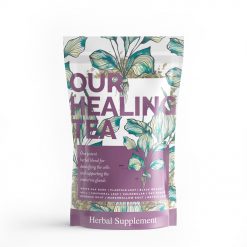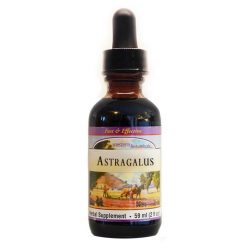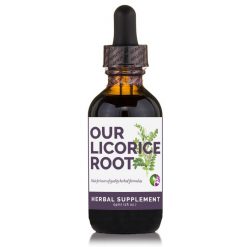No products in the cart.
Ashwagandha Root Extract
$33.95
Herbal Tincture Extracted from: Dried root
Also known as: Withania somnifera
Ashwagandha, is an adaptogenic herb popular in Ayurvedic medicine that has shown incredible results for lowering cortisol and balancing thyroid hormones. In India, ashwagandha is known as the “strength of the stallion” since it has traditionally been used to strengthen the immune system after illness.
Sorry, This formula is out of stock just now :(
SKU: URAS01-2 Categories: Our Botanicals Products, Single Herb Extracts & Capsules
OVERVIEW
Ashwaganda is a highly revered medicinal herb used in Ayurveda for millennia and praised as a longevity and vitality tonic. It is often referred to as ‘Indian ginseng’ due to its similarity to ginseng in its action. Its herbal actions span a wide range from adaptogenic to sedative. In many Asian countries, all parts of the plant are utilized, and the tender leaves are eaten as a vegetable. As a gentle nourishing herb, it can be administered to children as well as the elderly. Many scientific studies exist regarding its manifold healing properties.
BOTANY
Native to Africa, Southeast Asia and the Mediteranean, Withania somnifera is an undershrub with hairy branches, ovate leaves, yellow to greenish flowers, and bright red berries. It is in the Solanaceae or nightshade family, and related to vegetables such as potato, tomato, and eggplant, and also to the psychoactive Jimson weed (Datura stramonium), and the medicinal bittersweet (Solanum dulcamara).5 The following species are used medicinally as well: W. coagulens, W. simonii, W. adunensis, and W. riebecki. The Latin species name, somnifera, means ‘sleep inducing’ and refers to its action as a sedative.
CULTIVATION AND HARVESTING
Ashwagandha is cultivated in India in regions such as Madhya Pradesh and Rajasthan. Most commercial supply is grown or wildcrafted in India.
HISTORY AND FOLKLORE
In Ayurveda (traditional system of natural medicine recognized practiced in India primarily but also in Bangladesh, Bhutan, Malaysia, Nepal, and Sri Lanka), the root is used, often powdered and mixed with honey and ghee (clarified butter). It has been part of their repertoire for millenia. ‘Ashwaghanda’ literally means ‘smelling like a horse’ which most likely refers to its actual scent (as many believe it smells like horse urine).
It is an effective sleep aid and used to balance various conditions that arise from ‘vata dosha’ (body type characterized by nervousness, dryness and feelings of cold) imbalances. It is believed to encourage youth and vitality, and, in the elderly, to quell nervousness. It is considered a ‘grounding’ and nourishing herb that helps to stabilize the mood as well, and is therefore another reason that it is supportive to female health. According to Anne McIntyre in “The Ayurvedic Bible” ashwagandha is an “exceptional nerve tonic” that is useful in cases of nervous exhaustion, worry, and overwork.
All parts of the plants have been used in traditional medicine. In India, the young leaves are eaten as a tasty vegetable sidedish. The bitter leaves were administered in cases of fever, and they were also bruised and applied topically for skin ailments and various swellings. Furthermore, they were combined with warm castor oil and administered in cases of worms and were also used to treat swelling. The unripe green berries were applied topically to the skin, and the root has been used externally too, as a treatment for soothing occasional sore joints. Also, the red berries have been used as a substitute for rennet which is used to coagulate milk when making cheese. In Africa, a tea of the bark was made to treat lung issues internally and skin issues externally.
FLAVOR NOTES AND ENERGETICS
Bitter, sweet, astringent in flavor and energetically warming (mildly).
HERBAL ACTIONS
Anxiolytic, tonic, hypolipidemic, rejuvenative, nervine, sedative, and adaptogenic.
USES AND PREPARATIONS
Dried roots cut and sifted for tea, powdered and added to formulas, tinctured, or encapsulated
CONSTITUENTS
Key constituents include: ashwagandhine, cuscohygrine, anahygrine, tropine, withaferin A, withanolides*, withasomniferin, withasomidienone, withasomniferols, withanone, withaniol, sitoindosides, acylsteryl glucosides.
- the steroidal withanolides resemble, in both action and appearance, ginsenosides, the active constituents of Asian ginseng (Panax ginseng).
PRECAUTIONS
Specific: Not for use in pregnancy except under the supervision of a qualified healthcare practitioner.
General: We recommend that you consult with a qualified healthcare practitioner before using herbal products, particularly if you are pregnant, nursing, or on any medications.
Reviews
There are no reviews yet.
Herbal Tinctures Dosage Directions:
Tinctures are usually taken 1 dropperFULL 2-3 times per day. You can mix the dropper in water or juice if you find the taste is too strong for you, although I prefer to take mine 'straight'. If you are using multiple tinctures together in your protocol then you can mix the dosages into a 'shot-glass' to take if you wish.
Herbal Capsules Dosage Directions:
Capsules are usually taken 2 capsules 2-3 times per day, usually chased with water or juice to help them go down smoothly.
Herbal Teas Dosage Directions:
it is a perfect way to bring the healing power of herbs into your body throughout the day. Plus, making and drinking tea is always a beautiful way to have a special ceremonial time just for you and your wellness. The Heal All Tea is also often used very effectively as a mouth wash and also for douches and enemas.
- Internal: 1 to 3 cups, 2 to 4 times a day.
- Acute: 4 cups per day.
- Chronic: to 1 cup, 3 times a day.
- Douches: 1 cupful, 1 to 2 times a day.
- Enemas: 1 cupful, 1 to 2 times a day.
- Mouthwash: Hold and gargle, one cupful per day.
Caution during pregnancy, especially early pregnancy (first 5 months).
This tea is truly a Heal-All. Use as a douche, enema (colorectal issues), and as a mouthwash for mouth & throat cancers, abscesses, etc Internally a great daily detox tea. Much more powerful than Essiac Tea You may also use this tea as a poultice or fomentation.
GI Broom Dosage Directions:
Powder Form:
Mix 1 rounded teaspoon of The GI Broom in 8-12 oz. of fresh pressed (if possible) grape or apple juice, 1 time daily (either in the mid-morning or before bedtime). Follow immediately with 10-13 oz. of water. If you can't juice, 100% organic fruit juice (preferably in a glass container) is suitable.
Capsule Form:
Take 6 capsules with 10 oz of water once (acute) or twice (chronic) per day as directed by your healthcare practitioner. Be sure to stay hydrated with water or fruit juice. Constipation or dehydration is not wanted! Be sure to adjust bowel formulas so you are moving 3 times per day.
Note: Don't consume with supplements, foods or herbal formulas. Take at least two hours after meals and supplementation. For best results consume during periods of juice or fruit fasting.
Related products
New









Be the first to review “Ashwagandha Root Extract”
You must be logged in to post a review.